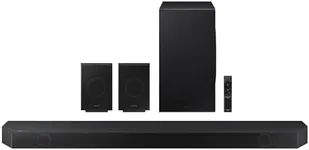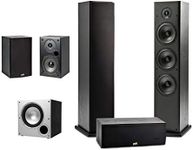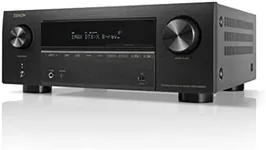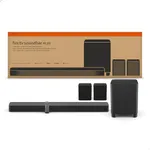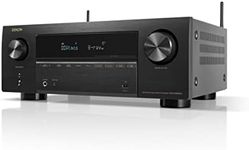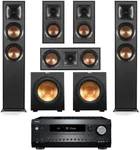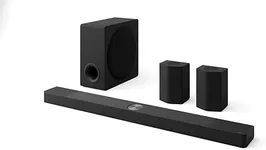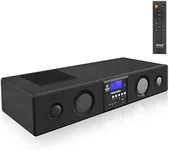Buying Guide for the Best Surround Sound Systems
Choosing a surround sound system can greatly enhance your movie nights, gaming sessions, or music listening experience by providing immersive, multi-directional audio. Picking the right system involves understanding your room, your personal needs, and the system’s features. Before shopping, consider the size of your room and how much space you’re willing to dedicate to speakers and equipment. Also, think about what you will mostly use your system for, such as watching movies, playing games, or listening to music, since different setups can perform better for different tasks. Understanding the key specifications can help you find a system that best fits your lifestyle and preferences.Number of ChannelsThis refers to how many separate audio outputs the system has for surrounding you with sound. Common setups include 5.1 (five speakers and one subwoofer), 7.1, and even higher channel counts. More channels create more precise and enveloping sound but also require more physical space and setup. For a small to medium room and general use, 5.1 is often sufficient, offering a solid surround experience. If you have a larger space or want the most immersive experience for movies and games, you might want 7.1 or more. Think about the physical size of your room, where you can place speakers, and how 'cinematic' you want the experience to feel when selecting the channel count.
Speaker Type and SizeSurround systems come with different sizes and styles of speakers, such as bookshelf, floor-standing, satellite, or in-wall/in-ceiling speakers. Larger speakers generally deliver louder and deeper sound, while smaller ones are more discreet and easier to place. If space and aesthetics are important, compact satellite speakers or in-wall speakers are a good choice, but for more powerful sound, especially in larger rooms or for music listening, bigger floor-standing or bookshelf speakers can be better. Consider how much space you have, whether you prefer your speakers to be visible or hidden, and what fits in with your room décor.
Wireless vs WiredSome systems connect all speakers with physical wires, while others use wireless links for some or all speakers. Wired systems can offer more reliability and consistent audio quality, but setting them up can be more complex, and you’ll have cables running across your room. Wireless systems make setup simpler and look tidier, especially in rooms where running wires is difficult, but they might occasionally have signal dropouts. Think about your willingness to run wires, the layout of your room, and your need for flexibility or ease of setup when choosing between wired and wireless.
Supported Audio FormatsSurround sound systems decode audio formats like Dolby Digital, DTS, Dolby Atmos, or DTS:X. Standard formats (like Dolby Digital and DTS) are widespread and provide solid surround sound. Newer formats like Dolby Atmos and DTS:X add ‘height channels’ for 3D sound effects, making audio even more immersive. To decide which formats you need, consider what kind of movies, games, or streaming services you’ll use most; if you want the latest, most immersive sound and your content supports it, look for systems with Atmos or DTS:X support. Otherwise, standard surround decoding is enough for most users.
Amplifier Power and Receiver FeaturesThe amplifier, usually inside an AV receiver, supplies power to your speakers and interprets audio signals. Power is measured in watts per channel and affects how loud and clear your sound can get, especially at higher volumes. For smaller rooms or casual use, moderate power is plenty, while large rooms or high-volume listening will need more. Also, check the receiver's features, like HDMI inputs, Bluetooth, streaming support, and calibration tools, to make sure it’s compatible with your other devices and fits your usage style. Prioritize features that match how you plan to connect your TV, gaming console, or music devices.


